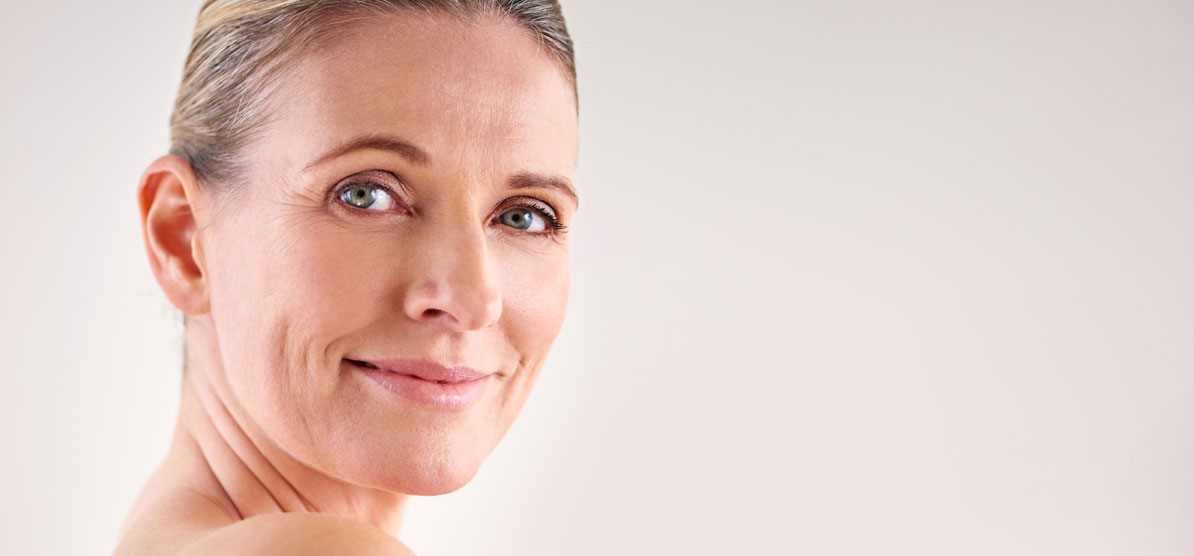Working in the personal care industry, it is easy to comprehend that there are countless aspects to the aging of skin. The anti-aging segment is and will continue to be the most important segment in the skincare market. Since the beginning of time, virtually, humankind has been interested in looking as attractive as possible and aging has always been associated with losing one’s attractiveness.
Changing paradigms
Skin features, associated with skin aging, like wrinkling and sagging of skin as well as unevenness of the color of skin make people ‘look old’ and have been and still are a big focus for the consumer and the skincare industry alike. We do see a shift in consumer behavior, though. Now more than ever, the consumer has a preventative approach in the way she or he is dealing with their aging skin. Additionally, consumers now show to have a more holistic approach towards their aging body and skin, where their bodily and skin health are at the center of their attention, where healthy looking skin is now the main focus.
The personal care industry has always put a lot of emphasis on understanding the science of age-related skin features. We have always been interested in how to maximize the reduction of wrinkle depth and length with a cosmetic product or an active ingredient. Evening out skin color by reducing pigment production in age spots has always been a large focus too. These approaches of trying to solve age-related skin issues will continue to be of interest, but the new preventative and ‘health’ paradigm has both opened new doors for cosmetic scientists to tackle skin aging and made cosmetic care of aging skin probably more realistic. After all, it is better and probably easier to prevent a problem from occurring than it is to solve the problem.
Altogether, for the cosmetic industry, skin aging has now evolved from trying to find a solution for age-related skin features to trying to fully understand the mechanism in our body and skin which lead to these features. The science of skin aging, consequentially, has become much more complex, but indeed, also more powerful. Anybody with thorough understanding of the general cell biological and molecular features of the skin will testify that skin aging encompasses countless cellular and biochemical processes. By definition, with thorough understanding come many questions. Any scientist will attest to that.
topStarting at the start
Although much is known about skin and skin aging scientifically, there are still many open questions. In finding good cosmetic solutions for aging skin, both scientifically and in the perception of the consumer, it is important to understand the details. These details can only become relevant, though, when one is also able to zoom out, keep the overview and recognize the coherencies and interrelationships between the cellular and biochemical factors which are of interest. As scientists it is important to start with definitions. The definition of aging is: “Aging represents a progressive biological impairment at the cellular level, resulting in decreased ability to perform normal functions, ultimately increasing the likelihood of death. Aging damage occurs to molecules (DNA, proteins, lipids), to cells and organs.” Skin aging is described as “Skin aging is a process where external (extrinsic) and internal (intrinsic) factors lead to a change in structural integrity and physiological function of skin”.
topZooming out: good agers and bad agers
A good question to help us understand the big picture and develop effective active ingredients, is: Why do some people age very well (good agers), whereas other people age very badly (bad agers)? Following the above definitions of aging, during time, bad agers accumulate a lot more damage in their molecules, cells and organs than good agers. Are we able to understand the scientific differences which lead to these biological discrepancies between good and bad agers? Can we learn from this? Can we apply this knowledge to cosmetic active ingredients and skincare?
Good agers age well. They become old with few or no problems with illness. At old age, they show skin aging features, but their skin is healthy and robust. Bad agers age badly. They die at young age and their skin starts to show skin aging features at young age. People with genetic disorders like Xeroderma Pigmentosum (XP) and Cockayne Syndrome (CS) are extreme examples of bad agers. In order to develop effective ‘anti-aging’ cosmetic active ingredients, it is opportune to try to recognize the relevant biological differences between bad agers and good agers. Another extremely interesting approach towards trying to understand aging, is looking closely at differences between men and women. Historically, women have always died at a later age than men. Women age better than men, biologically. A closer look at the biological features of this difference leads to an important conclusion: women tend to have stronger bodily defense mechanisms, women are immunologically more robust than men.
Circling back to the definitions of (skin) aging, accumulation of damage, caused by intrinsic and extrinsic factors is the most important topic of concern. A robust immune system is able to at least partly reduce aging-related damage. This explains the above-described differences in aging between men and women, but also those between good and bad agers. Here too, the most important biological difference between those who grow old healthily and those with genomic disorders which lead to an unhealthy body and early death, lies in, what is essentially the ability to repair damage. In CS and XP, genes related to DNA repair show important defects. DNA damage, albeit caused by extrinsic or intrinsic factors, cannot be repaired sufficiently. This lies at the core of the problem for these bad agers.
topZooming in, getting to the point
Altogether, cellular and molecular damage are a given for the skin. The skin lies at the periphery of our body and is exposed to many detrimental extrinsic stresses. On a typical day, the DNA of our keratinocytes, the cells in the outermost layer of our skin, the epidermis, is damaged virtually constantly. Per cell, scientific literature tells us that we can count to up to 10,000 damaged bases in the DNA. After a day in the sun, this number can be increased to up to 100,000, for each cell. These numbers illustrate the vastness of the damage, but also the incredible immunological ability of young and healthy skin in repairing its damage. They also help comprehend the problem for people with CS and XP. What this notion also helps with, is in the understanding of what a cosmetic active ingredient might need to be able to do to both, have a scientifically relevant effect on aging skin and an efficacy which fulfills the needs of the modern anti-aging skincare consumer.
Now, with above-described knowledge, and zooming in, the most important cell biological and biochemical events can be defined. Can an active ingredient make skin cells more immunologically robust and can it enable these cells to repair their damage? In essence, can the active ingredient help the cells to help themselves?
An interesting example of such an ingredient is Phytosan™ K (INCI: Glycine Soja (Soybean) Seed Extract). The interaction of Phytosan™ K with our skin cells makes these cells more immunologically robust. This is an important feature in the context of photoaging, i.e. sunlight-induced aging. Sunlight does not just damage our skin cells, it also has important immunosuppressive properties. In other words, sunlight makes our skin’s self defense and repair mechanisms less effective. This underlines the importance of sunlight for skin aging; 70-80% of all visible signs of skin aging are caused by sunlight. With Phytosan™ K, the skin cells will stay immunologically robust and are able to repair their damage more effectively.
topRecap
Until not long ago, the main focus of anti-aging active ingredients was to regenerate aged skin. With current consumer demands the interest has shifted to a clearly more scientifically holistic approach. Aging is all about the accumulation of damage and damage can be repaired by our skin’s intrinsic immune system. Our skin cells are all immunologically active and active ingredients can help the skin cells to maintain these vital properties and keep their youthful functionality. When the skin cells are fully functional and healthy, the skin will be fully functional and healthy. Fully functional and healthy skin will look healthy, young and attractive.
top
